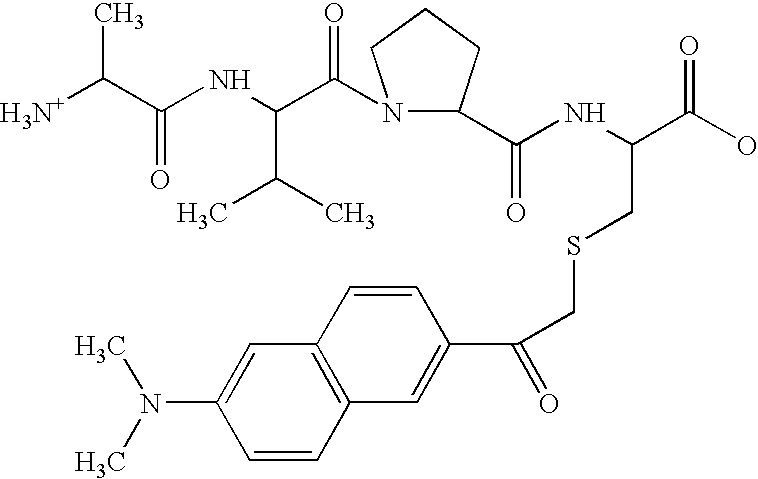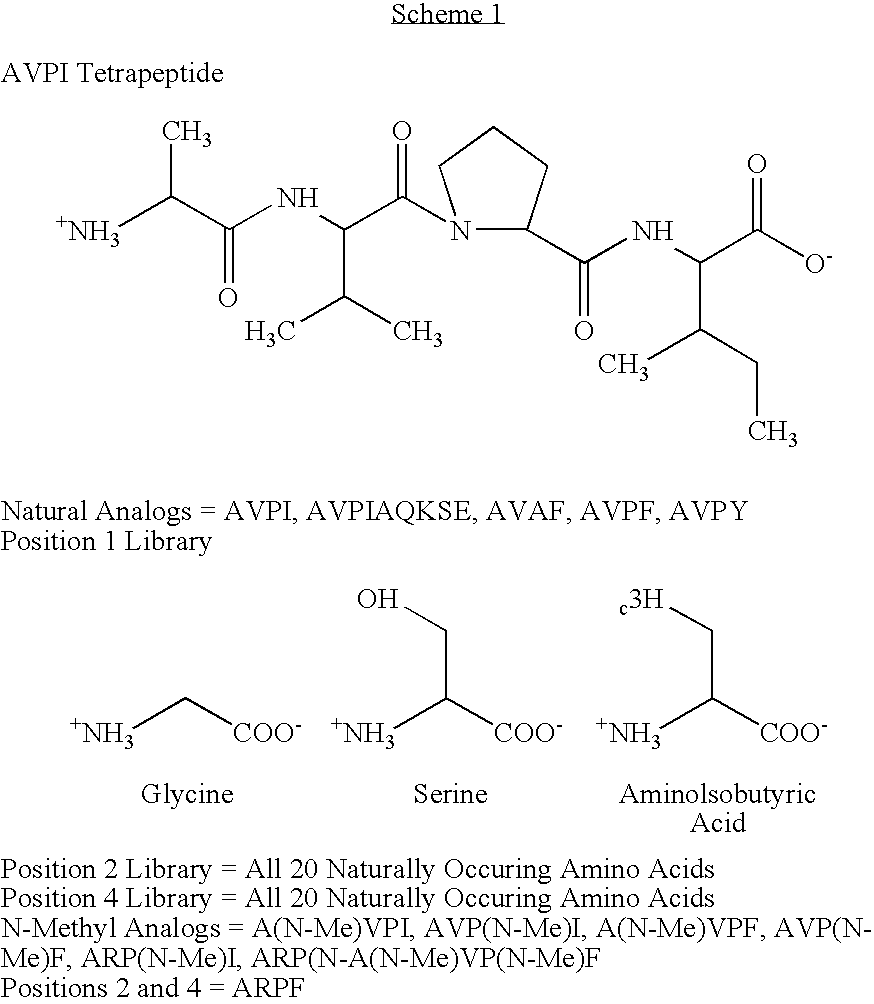Iap binding peptides and assays for identifying compounds that bind iap
a technology of iap and assays, applied in the field of drug design and development for preventing and treating cell proliferative diseases, can solve the problems of lack of molecular specificity of therapies, patents that neither disclose nor teach structural bases, etc., and achieve the effect of relieving iap-mediated suppression of apoptosis and high throughput screening
- Summary
- Abstract
- Description
- Claims
- Application Information
AI Technical Summary
Benefits of technology
Problems solved by technology
Method used
Image
Examples
example 1
Molecular Targeting of Inhibitor of Apoptosis Proteins Based on Small Molecule Mimics of Natural Binding Partners
[0063] In this example, a fluorescence assay was used to test the binding of a library of tetrapeptides modeled on the Smac N-terminus to the surface pocket of the BIR3 region of XIAP. The results make it possible to parse the contribution of each residue of the tetrapeptide to the total binding energy of the interaction.
Materials and Methods
[0064] Materials. Unless otherwise stated, materials were purchased from Aldrich Chemical Co. (Milwaukee, Wis.) or Fisher Scientific (Pittsburgh, Pa.) and used without further purification. Methylbenzhydrylamine (MBHA) solid-phase peptide synthesis resin, Rink amide resin, and 9-Fluorenylmethoxycarbonyl (Fmoc) protected amino acids were obtained from Advanced ChemTech (Louisville, Ky.) and NovaBiochem (San Diego, Calif.). 6-Bromoacetyl-2-dimethylaminonaphthalene (badan) dye was obtained from Molecular Probes (Eugene, Oreg.).
[0065]...
PUM
| Property | Measurement | Unit |
|---|---|---|
| excitation wavelength | aaaaa | aaaaa |
| pH | aaaaa | aaaaa |
| integration time | aaaaa | aaaaa |
Abstract
Description
Claims
Application Information
 Login to View More
Login to View More - R&D
- Intellectual Property
- Life Sciences
- Materials
- Tech Scout
- Unparalleled Data Quality
- Higher Quality Content
- 60% Fewer Hallucinations
Browse by: Latest US Patents, China's latest patents, Technical Efficacy Thesaurus, Application Domain, Technology Topic, Popular Technical Reports.
© 2025 PatSnap. All rights reserved.Legal|Privacy policy|Modern Slavery Act Transparency Statement|Sitemap|About US| Contact US: help@patsnap.com



